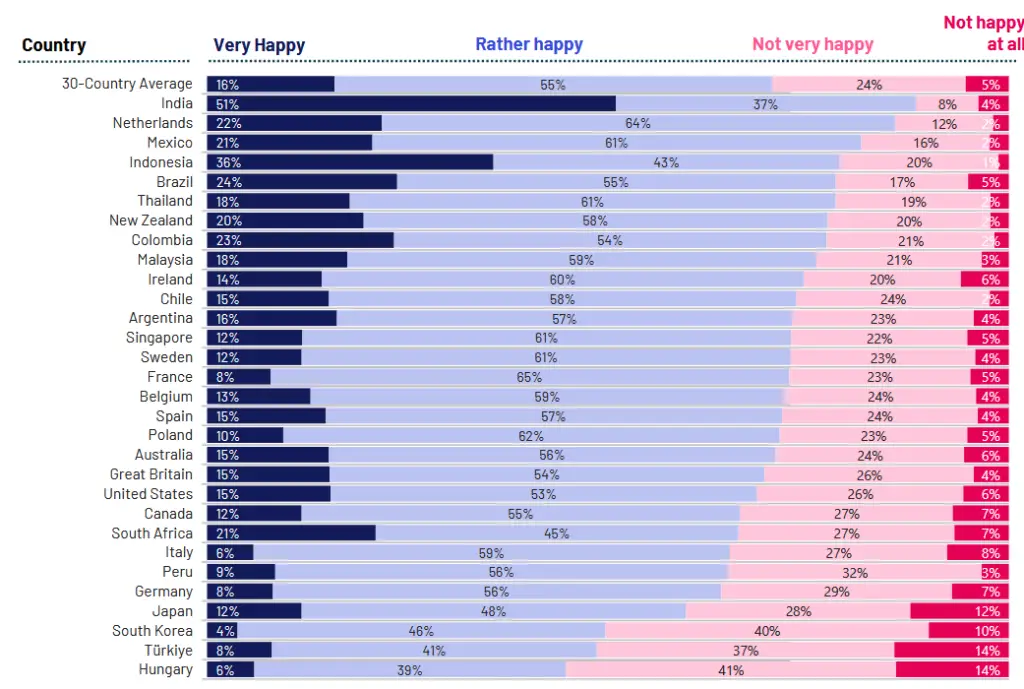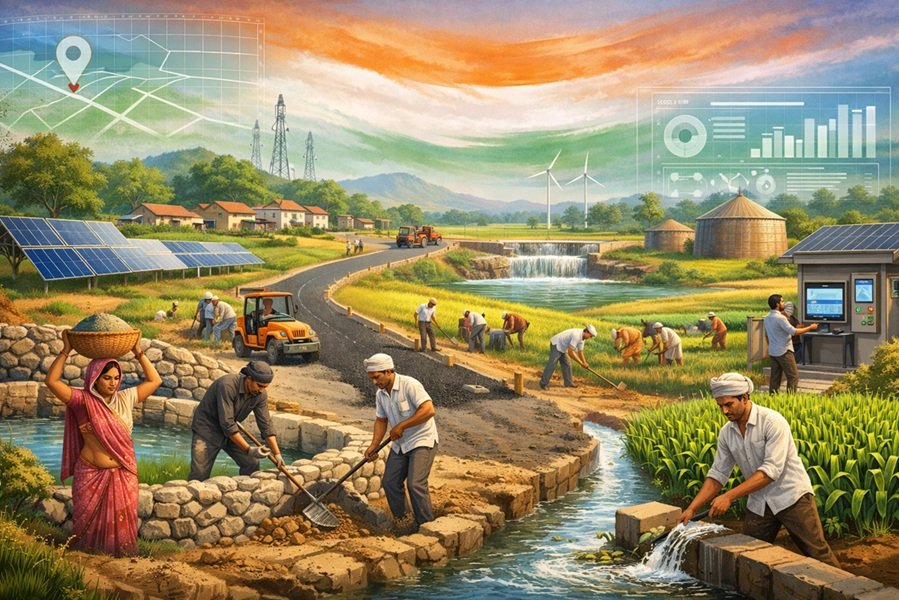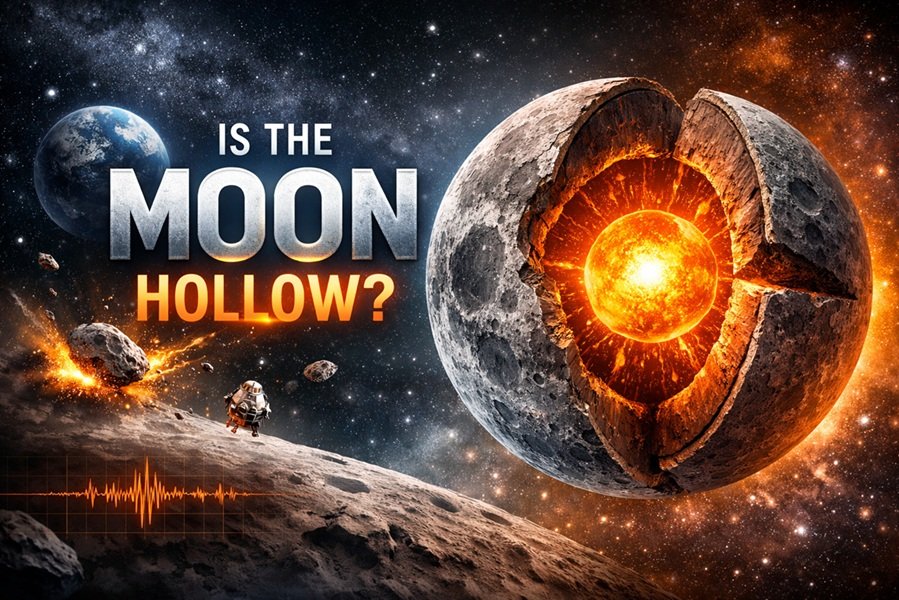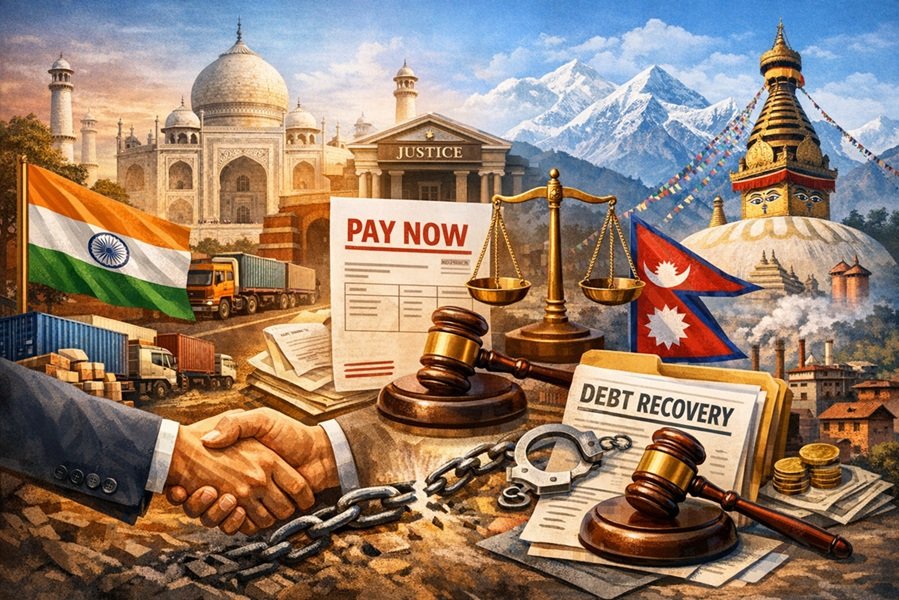
Introduction
The World Happiness Report, an annual publication ranking countries based on happiness, is widely followed by governments, researchers, and media outlets. The 2025 edition of the report continues to generate controversy, with Finland topping the list for the eighth consecutive year and India ranking 118th. Meanwhile, war-torn, economically devastated, and crisis-ridden countries such as Ukraine, Venezuela, and Palestine rank higher than India, raising serious questions about the methodology and reliability of this index.
In this article, we will critically analyze the flaws, inconsistencies, and subjective nature of the World Happiness Index (WHI), examining its methodology, biases, and real-world implications.
Understanding the Methodology of the World Happiness Index
The World Happiness Index is compiled using data from the Gallup World Poll and ranks countries based on six key factors:
- GDP per capita – Economic performance of a country.
- Social support – Perceived support from friends and family.
- Healthy life expectancy – The average expected lifespan with good health.
- Freedom to make life choices – The ability to make independent decisions.
- Generosity – Donations to charities and overall altruism.
- Perceptions of corruption – Trust in government and institutions.
Read This: Which is the Happiest Country in the World?
Countries are ranked based on subjective survey responses where individuals rate their life satisfaction on a scale of 0 to 10. The final rankings are a result of averaging these scores across the population.
Major Flaws in the World Happiness Index
1. Over-Reliance on Subjective Perception Instead of Objective Reality
The WHI primarily relies on surveys where people self-report their happiness levels. This is problematic because people in crisis-ridden nations often develop psychological resilience and report relatively high happiness levels despite objectively poor living conditions. For example:
- Ukraine, a nation suffering from war, destruction, and instability, ranks 111th, while India, a rapidly developing country, ranks 118th.
- Venezuela, suffering from hyperinflation and economic collapse, ranks 88th, much higher than India, which boasts one of the fastest-growing economies.
- Palestine, facing continuous conflict and humanitarian crises, ranks 108th.
These results highlight a major flaw in the WHI: it does not accurately reflect the objective realities of citizens but rather their perceptions of happiness, which can be highly influenced by cultural factors and adaptation to suffering.
2. Questionable Weightage Given to Social Support and Generosity
Social support and generosity are crucial components of well-being, but they should not outweigh basic needs such as economic stability, safety, and governance. The WHI gives undue importance to these factors, leading to inconsistencies:
- Nordic countries like Finland, Denmark, and Iceland consistently top the rankings due to their high social support, despite cold weather, high suicide rates, and increasing concerns over loneliness.
- Countries like India, which have strong family bonds and cultural traditions of social support, still rank low due to negative global perceptions.
This raises doubts about the fairness of the WHI’s methodology, as it appears to favor Western social norms over diverse global lifestyles.
3. Ignoring Political and Economic Instability in Certain Nations
A major contradiction in the WHI is its failure to adequately penalize nations for political instability, war, and economic turmoil. The presence of countries like Venezuela, Ukraine, and Palestine ranking higher than relatively stable and prosperous nations like India raises serious concerns.
- How can a country facing hyperinflation and economic disaster (Venezuela) rank higher than a nation with a growing middle class and a booming economy (India)?
- Why does a country engaged in war (Ukraine) rank higher than peaceful, developing nations?
- How does a war-torn region like Palestine score better than a country investing in technological growth and infrastructure?
This clearly exposes the bias in the WHI’s ranking system, which does not give enough weightage to economic stability and political security.
4. Cultural Bias in Measuring Happiness
Happiness is a deeply personal and cultural concept, yet the WHI applies a one-size-fits-all approach. Western nations, especially the Nordic countries, dominate the top ranks due to their individualistic and welfare-driven models, while Asian and African nations lag behind.
- Many Asian cultures emphasize contentment rather than happiness in the Western sense, yet their societies are ranked lower.
- In India, people find fulfillment in family, traditions, and spirituality, which are undervalued in the WHI’s ranking system.
- Countries that experience collectivist lifestyles and joint-family structures do not get proper credit for their unique social happiness frameworks.
Thus, the WHI disproportionately favors Western definitions of happiness while ignoring cultural variations.
5. Inconsistencies in India’s Ranking
India’s ranking at 118th seems contradictory when considering its rapid economic development, improved life expectancy, and increasing technological advancements. Despite:
- Having a booming economy.
- Investing heavily in infrastructure, health, and education.
- A thriving youth population and innovation-driven startups.
- A deeply rooted social fabric of family support and cultural values.
India continues to rank lower than nations in crisis. This raises serious questions about whether global media narratives and selective reporting play a role in the WHI’s perception of India.
6. Sample Size: just 1 lacs people in the world.😂
The World Happiness Index 2025 is based on survey data collected by the Gallup World Poll, with around 1,000 respondents per country and a total sample size of over 140,000 across more than 140 nations. While this approach may work for smaller countries, it is highly insufficient for India, the world’s most populous nation, with over 1.4 billion people. Even though India reportedly has a larger sample size of around 3,000 respondents, this still represents an extremely small fraction of the population. Given India’s vast regional, cultural, economic, and linguistic diversity, such a limited sample cannot accurately reflect the happiness levels of its people. A more representative survey would require a significantly larger and more geographically diverse sample to capture the varied experiences and realities of India’s population.
The Real Measures of Happiness
If the WHI were to be reformed, it should include the following objective indicators:
- Quality of Life Index – Measuring actual well-being based on housing, healthcare, and infrastructure.
- Crime and Safety Index – Reflecting security and law enforcement efficiency.
- Economic Stability – Considering inflation, employment, and business opportunities.
- Political Stability – Evaluating governance, freedom of speech, and corruption.
- Mental Health and Stress Levels – Focusing on real psychological well-being rather than subjective survey data.
A reformed system based on these objective metrics would provide a far more accurate and fair ranking of global happiness.
Real Hapiness Index: Ipsos Global Happiness Index 2025

The Ipsos Global Happiness Index 2025 offers an alternative perspective on global happiness, distinct from the World Happiness Report. Ipsos relies on survey responses from individuals in multiple countries, focusing on personal happiness rather than national-level indicators like GDP or governance quality. The ranking is based on people’s self-reported satisfaction with various aspects of life, including health, relationships, financial security, and freedom. While this approach provides valuable insight into how people perceive their own well-being, it is still subjective and may not fully reflect a country’s overall living conditions.
India’s ranking in the Ipsos Happiness Index 2025 has drawn attention due to its significant movement compared to previous years. Unlike the World Happiness Report, which often places India lower in the rankings, the Ipsos survey suggests a relatively higher level of personal happiness among Indians. This can be attributed to strong family bonds, cultural optimism, and the increasing economic opportunities that enhance people’s personal lives despite challenges such as urban congestion, income disparity, and governance issues. However, the ranking also highlights areas where India still struggles, such as work-life balance and mental health awareness, which affect overall happiness levels.
Critics argue that while the Ipsos Happiness Index provides a useful snapshot of how people feel, it lacks depth in assessing structural issues like poverty, healthcare accessibility, and political stability. Additionally, survey responses can be influenced by cultural differences in expressing happiness. For instance, societies that value resilience and contentment may report higher happiness levels despite economic hardships, while those with higher expectations may express dissatisfaction even in better conditions. Therefore, while Ipsos offers an interesting contrast to other happiness measures, it should be interpreted with caution and in conjunction with other socio-economic indicators.

Conclusion: A Flawed Report with an Agenda?
The World Happiness Index 2025, like its previous editions, fails to provide a truly accurate representation of global happiness. By prioritizing subjective perceptions over objective realities, ignoring political and economic turmoil, and displaying cultural biases, it creates an inaccurate and misleading picture of global well-being.
Instead of blindly accepting the WHI’s results, policymakers and analysts should focus on real indicators of happiness, such as economic growth, safety, healthcare, and mental well-being. Until major reforms are introduced, the WHI will remain a flawed and unreliable measure of happiness.
The question remains: Is the WHI genuinely about measuring happiness, or does it serve a deeper geopolitical or ideological agenda?







